Behind the Scenes of New North Runway -
Runway Safety Team of Hong Kong International Airport
An Interview with Mr. Albert Ho, Assistant General Manager of the Airfield Department, Airport Authority Hong Kong (AAHK), November 2022
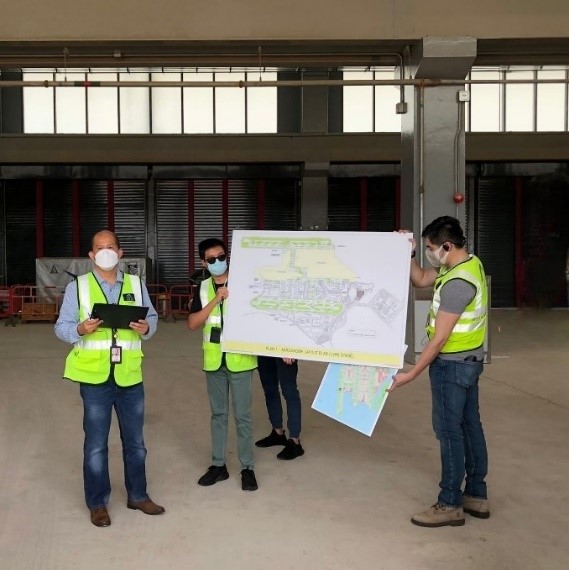
Mr. Albert Ho (on the left)
introducing the new North Runway
Mr. Albert Ho is the Assistant General Manager of the Airfield Department of Airport Authority Hong Kong (AAHK). Since 2000, he has been carrying out various duties at AAHK relating to Apron Operations, Airfield Operations and Flow Management, as well as numerous projects such as implementation of ICAO Global Reporting Format for harmonized assessment of runway surface conditions and monitoring unmanned aviation activities in Hong Kong International Airport (HKIA).
Currently, he is also the Chairman of the Runway Safety Team (RST) of HKIA, upholding runway safety standards, including that of the new North Runway. We are pleased to have Mr. Ho share with us the successful experience of RST in facilitating safety reviews of operations relating to the new runway and in promoting safety communications within the airport community.
-
Could you give us some background on the RST? What role does RST play in the development of the new North Runway?
The RST of Hong Kong International Airport (HKIA), with membership including the airlines, pilot and air traffic control officer associations, line maintenance organizations and the Civil Aviation Department (CAD), was established independent of the HKIA Airfield Operations and Safety Committee in 2014 to enhance runway safety by identifying and managing runway safety risks in a collaborative and multi-disciplinary manner, as well as communicating safety issues to airfield operational personnel in a dedicated platform. RST is not to replace any required component of AAHK’s Aerodrome Safety Management System, but to improve runway safety by integrating the safety systems of participating organisations. AAHK has made reference to Runway Safety Team Handbook published by the International Civil Aviation Organization (ICAO) when establishing the RST in HKIA.
During the development of the new North Runway, there has been a number of changes to the previous Two-Runway System (2RS), as well as new activities under the Interim Two-Runway System (I-2RS) - a transitional phase from 2RS to the 3RS, starting on 8 July 2022, when the Centre Runway is closed for reconfiguration while the new North Runway and the existing South Runway are in use. The role of RST is to disseminate updated safety information to the airport community, conduct safety risk assessment to assist the identification of potential runway hazards, and develop proactive safety enhancement actions by concerned parties.
-
As the Chairperson, what is your approach to promoting collaboration among different stakeholders and guiding the RST to achieve its objective?
I invite suggestions, thorough deliberations and supply of detailed information from different stakeholders such that issues could be addressed in an all-round manner. For example, for a Foreign Object Debris (FOD) incident, I would look into different facets of its existence in detail in order to comprehensively identify ways to prevent recurrence which include, inter alia, the origin of the FOD, the process which the object became an FOD and the reason for the FOD to remain in the operating area of the airfield. The effectiveness of FOD handling mechanism including the FOD Detection System would also be monitored and reviewed.
Say, if a bird carcass is found as an FOD, environmental factors potentially attracting birds, such as food source and landscape condition on the airfield, will be assessed. The cause of death for the bird will also be investigated, sometimes with the help of ornithologists and meteorologists. Mitigating measures can then be developed and implemented to ensure that each of the contributing factors to the incident is addressed. Involved parties will be informed with an aim to minimise the likelihood of recurrence.
Take another example, if an FOD is found to be an aircraft part, the aircraft from which the FOD was detached will be traced. The nature of the aircraft part will be examined to determine the possible causes for objects falling off. If deviation from maintenance regime is suspected, improvement suggestions or reminder will be sent to involved operator for their further action. The effectiveness of safety actions implemented will be reviewed as necessary.
-
Could you tell us an example of how RST address safety concerns identified during the development stage of the new North Runway?
To give an example of safety dialogues at the RST, let me share our work during the design stage on reviewing the proposed operations for the twin-taxiways during the I-2RS. The twin-taxiways is a set of newly built passageways located across the middle of the currently closed Centre Runway that allows aircraft to taxi between the northern and southern parts of the airfield during I-2RS.
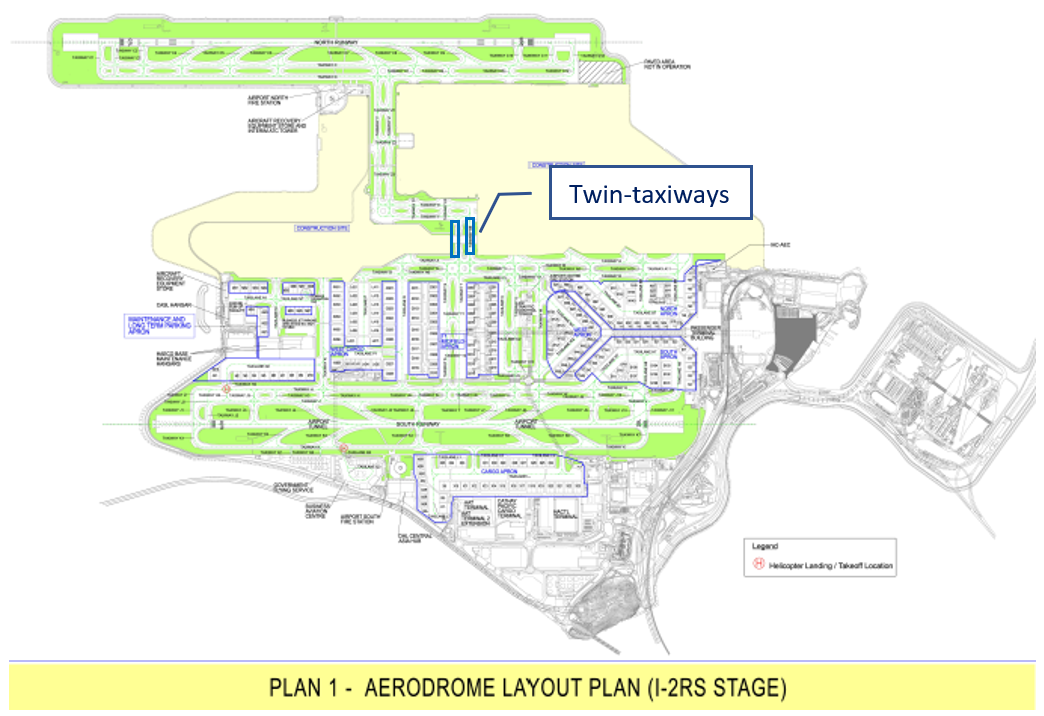
I-2RS aerodrome layout (https://www.ais.gov.hk/eaip_20230907/2023-09-07-000000/pdf/VH-AD-2-VHHH-ADC-1.pdf)The potential use of those taxiways after I-2RS was studied by the RST. Taxiway design guidance in ICAO Annex 14 for reducing the risk arising from runway incursions was reviewed. RST members shared the knowledge that at location around the mid-length section of a runway, a departing aircraft may not yet be airborne, or a landing aircraft may still be at a relatively high speed after touchdown. Should a runway incursion event take place at the mid-point of a runway, the severity of the consequence could be higher than other locations.
As perimeter taxiways at both ends of Centre Runway will be available upon commencement of 3RS operations, during the design stage in 2014, it was concluded that as a safety measure, operations on the twin-taxiways should be avoided when the Centre Runway is in operation. In this regard, the twin-taxiways were planned to be decommissioned once 3RS is implemented.
The example above shows how the safety issue was managed proactively through deliberations in RST and other meetings. Apart from the example above, the RST actively engages members and the airport community through safety promotional events like safety campaigns and runway walks. A vast amount of positive feedback has been received for the new runway and the other elements of the I-2RS airfield, especially on the compliance with ICAO standards and recommended practices.
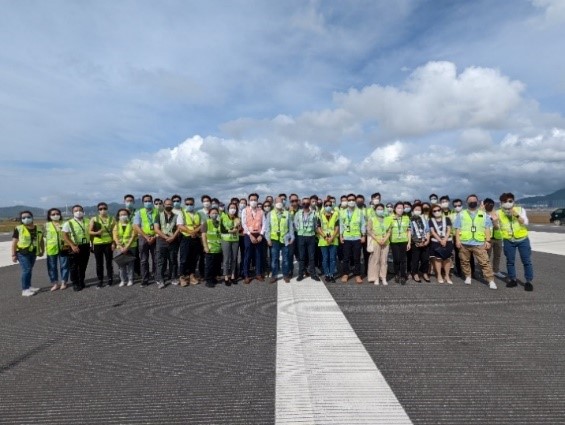
Visit to the new North Runway on 17 June 2022 -
The transition from the 2RS to I-2RS to use the new North Runway is a significant moment to the local aviation industry. Could you share with us some of the major runway safety tasks that RST has been handling to support the commissioning of I-2RS and will be handling to support the safe operation of I-2RS?
RST has been overseeing a wide range of issues relating to runway safety, including abnormal runway contact, runway excursion / incursion, runway confusion, collision with obstacles, ground handling, and damage from FOD, to name a few. RST has also acted as an effective platform for exchange of runway safety data and information among its members, and initiated safety awareness campaigns to draw the attention of airport staff to runway safety measures. In particular, in ascertaining that the new North Runway is safe for use by aircraft, AAHK in coordination with CAD conducted various tests / demonstrations on the pavements and aeronautical ground lights to ensure facilities’ serviceability, with the relevant stakeholders well informed. In addition to the safety risk assessment during the design stage, before the new North Runway was made available for use by aircraft, emergency response plans had also been formulated and trialled (such as aircraft emergency desktop drills) to facilitate the stakeholders’ smooth handling of various emergency scenarios associated with the new North Runway.
After the completion of the required aerodrome licensing process associated with I-2RS by CAD in May 2022, RST has targeted its attention and efforts at monitoring the operation of the I-2RS through operational information and gathered constructive feedback from frontline personnel and other stakeholders. This contributed to the success of the commissioning of the new North Runway on 25 November 2022. Safety solutions will continue to be developed and disseminated proactively as construction works of the 3RS continue around the airfield. RST will also keep abreast of the latest development of 3RS, initiate and facilitate multi-disciplinary discussions and follow-up actions, and prepare the airport community for the upcoming changes.
Closing thoughts …
By Strategic Safety Office, Civil Aviation Department (CAD)
Ensuring safety during the transformation of an operating airport from the previous 2RS into I-2RS is a complex task, and RST has a vital role to play. From the sharing of the mastermind behind RST, we are positive that with continuous support from the aviation community, RST will accomplish its safety goal for the expansion of HKIA.
On this note, we would like to add that despite the pandemic challenges in the past years, the I-2RS of the HKIA, which has progressed as planned, is an achievement in itself. With the concerted efforts of the AAHK, the CAD and the aviation community, a number of challenging milestones have been achieved, including the completion of pavement works for the new North Runway on 7 September 2021, the successful runway re-designation of the former North Runway (07L/25R) as the Centre Runway (07C/25C) on 2 December 2021, and the official commissioning of the new North Runway on 25 November 2022.
Dual role as Regulator and Service Provider adopting proactive safety management principles
Along this journey, the CAD has played a crucial role in the airport expansion project as the aerodrome licensing authority for HKIA, as well as the Air Navigation Service/Communications, Navigation and Surveillance (ANS/CNS) service provider and authority. CAD has conducted detailed assessments on the airfield facilities for the I-2RS to ensure these facilities comply with the aerodrome licensing requirements. On the ANS/CNS front, we have made provisions for modifying the air traffic control (ATC) system or providing new CNS equipment while implementing changes to the procedures for air traffic control at HKIA and arranging I-2RS conversion training for ATC controllers. Safety assessment workshops on CNS equipment and ATC procedures have been conducted.
To ensure that all projects and tasks are properly managed, various task forces and working groups focusing on different aspects of the 3RS project, such as ATC operational readiness, provision of ANS equipment, interim ATC tower, aerodrome licensing and security, runway re-designation, implementation of flight procedures and other transition arrangement have been established. Some groups comprised stakeholders such as the AAHK, the Fire Service Department (FSD), the Hong Kong Observatory (HKO) and industry.
Advanced technology under ASBU
In addition, to support the safe and efficient operations of the HKIA and its future expansion, the CAD has planned to deploy various advanced and sustainable aviation technologies in accordance with the roadmap stipulated in the ICAO Global Air Navigation Plan (GANP)/Aviation System Block Upgrades (ASBU). Apart from conducting the necessary safety assessment, we have made good use of the relatively low traffic environment during the pandemic to conduct operational trials with the AAHK. The CAD has proactively engaged relevant stakeholders, and conducted robust safety assessments and operational trials in accordance with the ICAO GANP and will continue to do so throughout the implementation processes.
To conclude, the CAD will continue to apply a performance and compliance-based approach in line with ICAO’s safety management and safety oversight principles in regulating the aerodrome and as ANS service provider, on the management of various runway/taxiway system developments, air traffic enhancement plans, and CNS projects relating to developments at the HKIA, to ensure that any identified risks can be mitigated timely and properly.
Drawing on the successful experience in the commissioning of the new North Runway under I-2RS at HKIA, we are fully committed to providing a safe and efficient air navigation services and facilitating a smooth commissioning of the 3RS System.
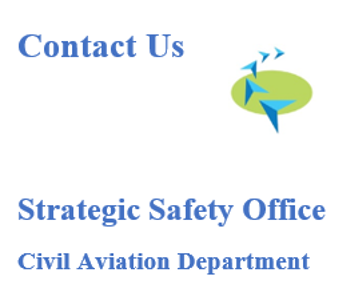
sso@cad.gov.hk |
What is "Safety Links" and how can I contribute?
Safety Links is a platform launched by CAD for aviation professionals to promote a positive safety culture. If you wish to share your safety stories, proactive safety management practices or lessons learnt with the aviation community, or update your subscription settings, please email sso@cad.gov.hk. Thank you for your continuous support on safety information sharing. |
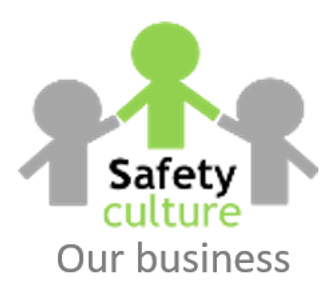
|

